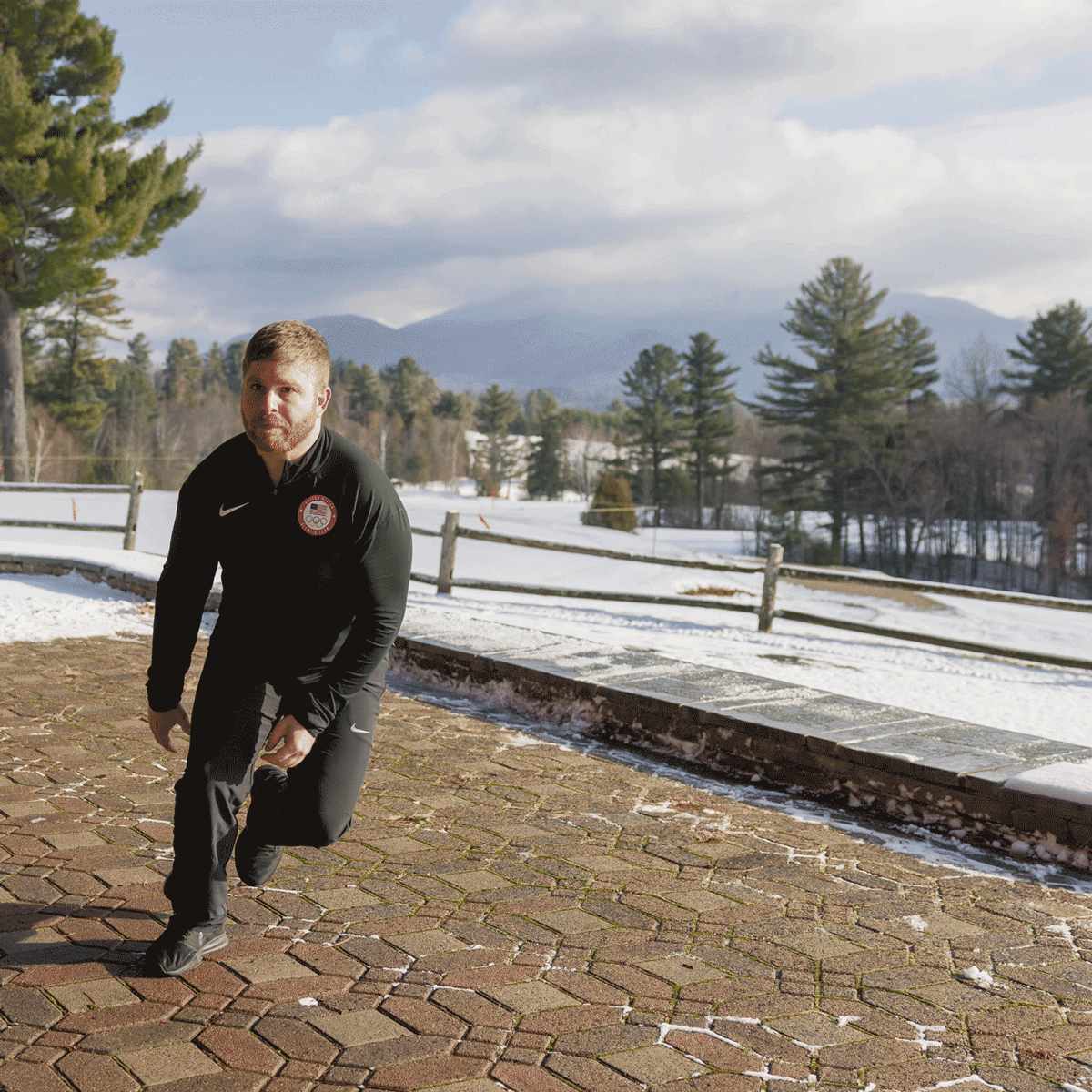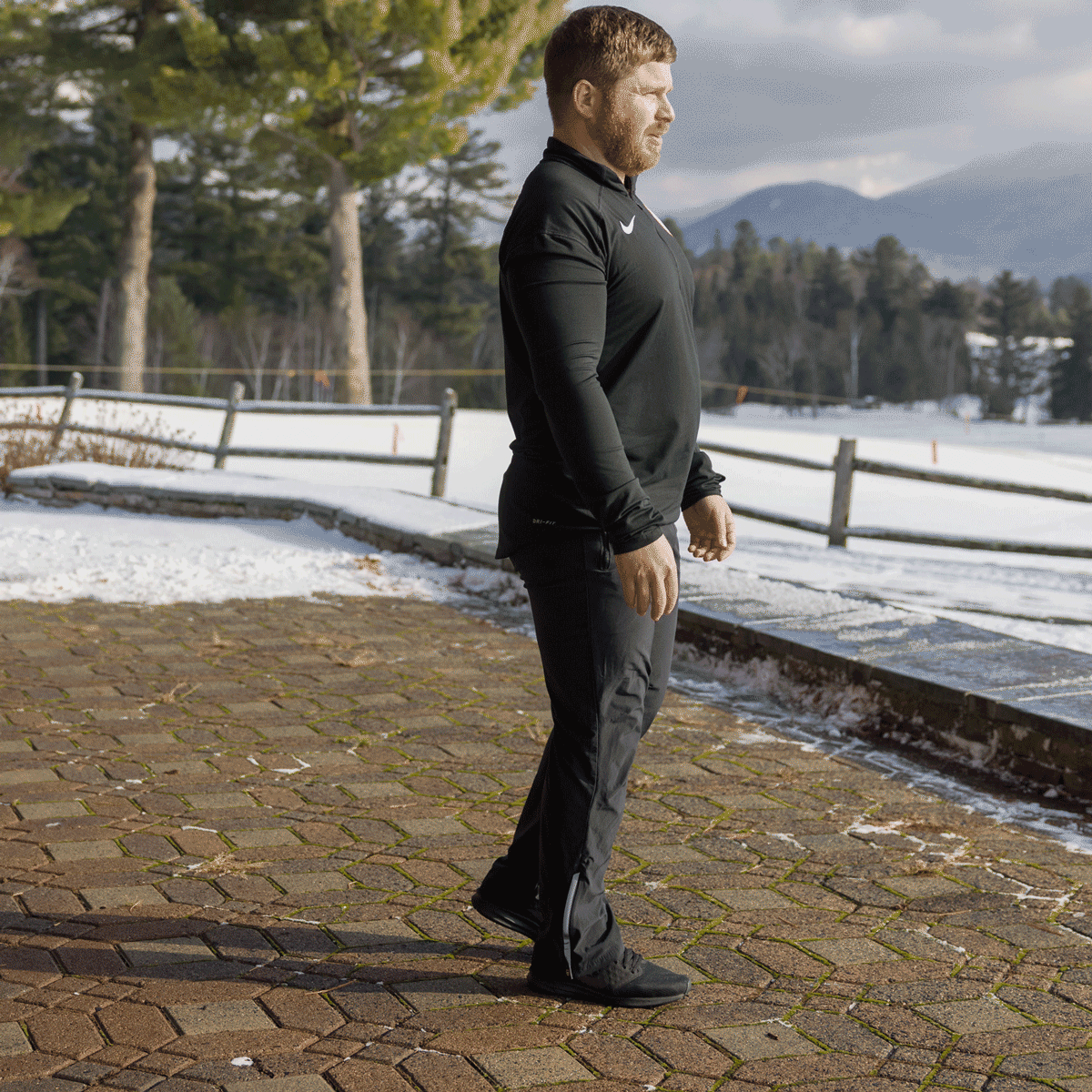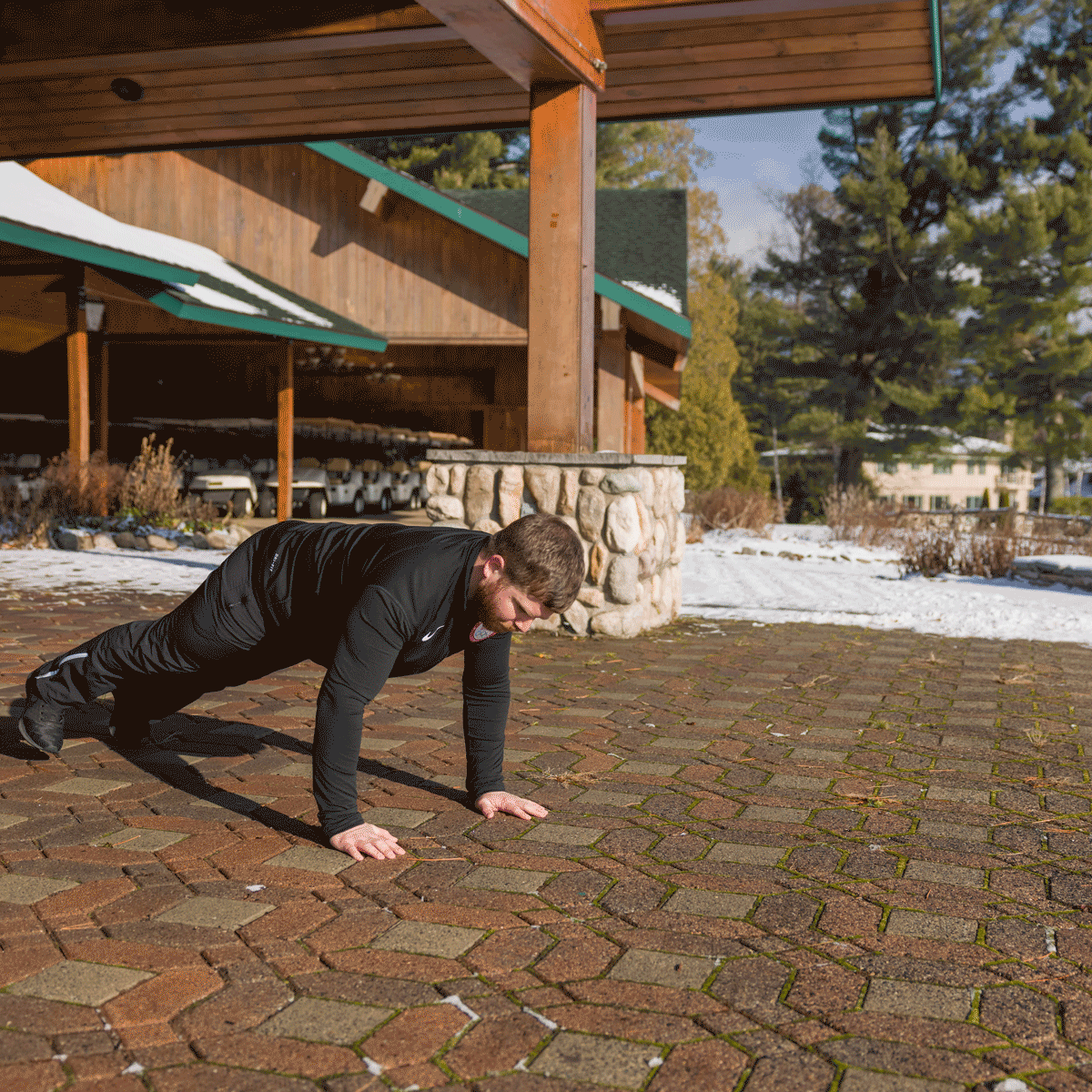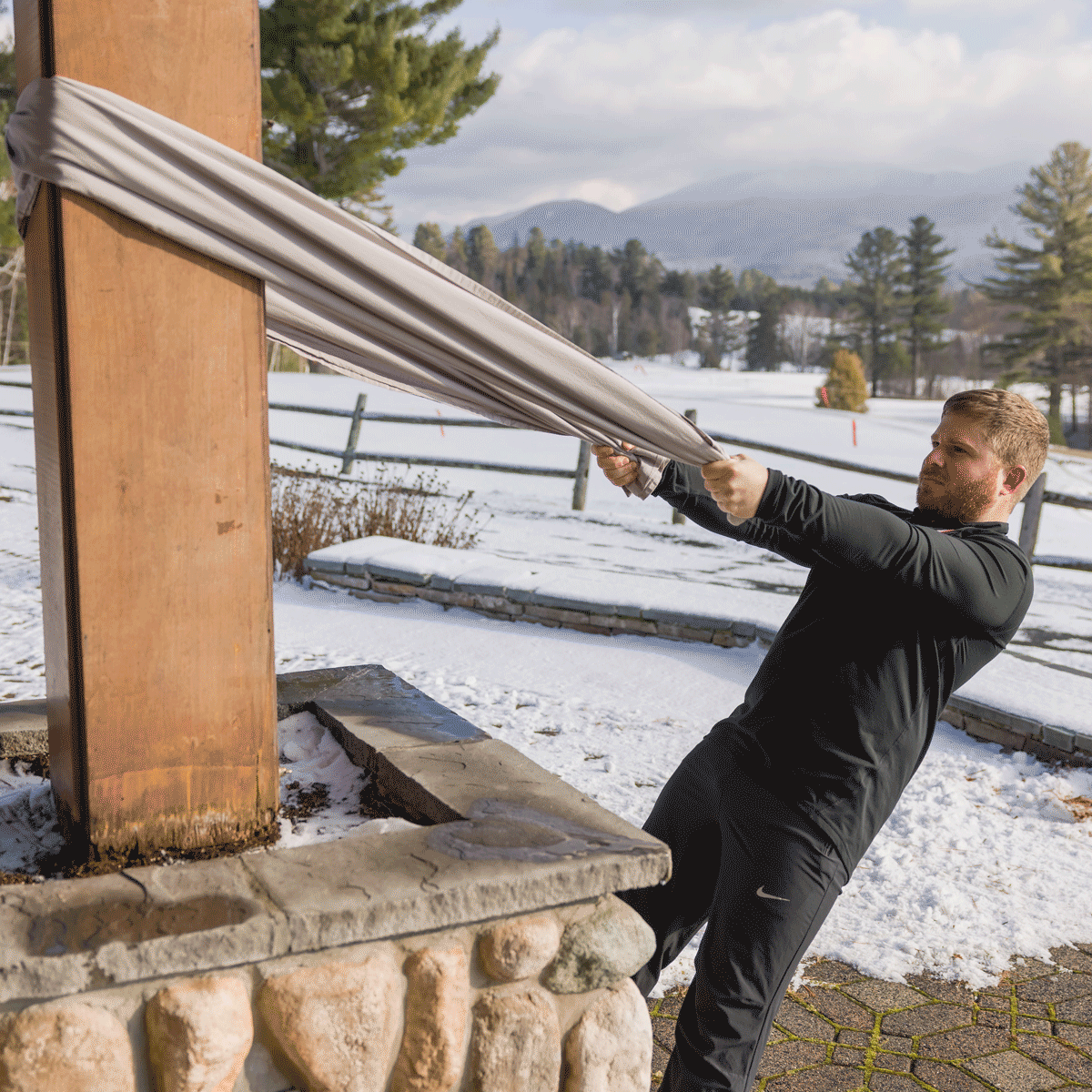Biathlon is the ultimate test of physical and mental stamina. During the Olympics, competitors often collapse with exhaustion after crossing the finish line. The challenging winter sport combines the endurance of cross-country skiing and the focus and precision of rifle shooting. “Biathletes have the unique ability to ski at high intensities, which increases their heart rate, then control their breath to shoot at a small target 50 meters away and repeating this for multiple laps,” says Ambrose Serrano, the head strength and conditioning coach for the U.S. Olympic biathlon team in Lake Placid, N.Y. “To sustain a movement over a long period without fatigue requires muscular endurance.”
Lower-body strength and power development are key in biathlon, as skiing requires triple extension through the hips, knees and ankles, says the 33-year-old Mr. Serrano. “Triple extension allows for more efficient force output into the ski, thus creating better propulsion,” he says. A strong upper body is needed for poling, and balance and stability are required to glide across the snow on one ski. To connect all the movements, an athlete needs a strong and stable core, he notes.
Mr. Serrano uses circuit-style training—a series of exercises with little rest between each set—to build muscular endurance in his athletes. “Exercises are performed at high effort to increase heart rates but are mixed in with exercises that require precision and focus,” he says. “The combination of focused balance between intense exercise mimics the requirements of biathlon.”
To turn the six exercises below into a circuit, perform each one for as many repetitions as you can in a given time period. Once the time is completed, take a rest, then move to the next exercise. Continue a pattern of work, rest, work, rest for all six exercises before taking a longer break. Perform two to five total circuits. Mr. Serrano suggests starting with 30 seconds of work, 30 seconds of rest and working your way up to one minute of work and one minute of rest. Increasing the work time compared to the rest time (i.e., 45 seconds of work, 30 seconds of rest) will increase the difficulty of the program.
Join The Wall Street Journal Fitness Challenge

Try this six-week program of exercises designed by an NBA sports performance coach for all skill levels that can be done almost anywhere, and delivered to your email inbox.
The Workout
Skater Jumps
Why: This explosive, plyometric exercise helps develop power, says Mr. Serrano. It also requires triple extension through the hips, knees, and ankles, which is important for efficient movement mechanics, particularly in a sport like biathlon. “Because it is a single leg movement, there is an extra need for balance and coordination and can help in working on any imbalances that may exist from one leg to the other,” he says. “This movement can also help reduce injury over the long term as it promotes joint and tendon health.”
How: Stand on one leg with hips and knees slightly bent. Perform a dynamic sideways jumping motion by extending through the hip, knee and ankle. Absorb the impact of the jump with the other leg by landing softly and holding that landing for a few seconds. Then jump off the other leg in the opposite direction, landing softly. Continue to bound in this pattern, maintaining a flat back and tall chest. Swing arms in coordination with each jump. Aim for maximum height and distance.
Option: Instead of holding the landing position, change direction as quickly as possible into the next jump. This will require more coordination, timing and ability to absorb force and change direction more quickly.

Mr. Serrano performs a skater jump.
Squat Pulses
Why: This lower-body, strength-based movement helps develop the hamstrings, glutes, quads and core. “The pulsing action of this exercise requires continuous activation, stimulation and contraction of the lower-body muscles,” says Mr. Serrano. “This helps to train strength endurance.”
How: Start standing with feet just wider than shoulders. Toes can be pointed forward or slightly out. Keep your chest upright and your weight centered in the feet for balance as you hinge at the hips and drop your belly button between your knees to perform a squat. Once at a squat depth with the upper thigh just parallel to the floor, return to just above parallel. Perform this movement in a repetitive pulsing pattern of no more than a few inches.
Option: Perform the exercise while holding a weighted object in front of your chest, hands cupped around the object as if holding a goblet.
Share Your Thoughts
How can you incorporate some or all of the biathlon workout into your exercise routine? Join the conversation below.
Single-Leg Toe Touch Reach
Why: Improve balance and coordination while also gaining strength in the feet, hamstrings and muscles in the lower back. “Increases in balance, coordination and strength in these areas will improve posture and reduce injury risk,” says Mr. Serrano.
How: Stand tall on the right foot. Reach for the middle of the right foot with the left arm while extending the left foot back, maintaining a straight line from shoulders to heel. This will create a “T” shape. Keep an open chest and flat back throughout the entire movement. Slowly stand upright and switch sides.
Option: Stand on an unstable surface, like a pillow, rather than the floor for an added challenge. This requires extra stability in the ankle, knee and hip to stay balanced, says Mr. Serrano.

Mr. Serrano demonstrates a single-leg toe reach.
Walking Push-Ups
Why: “Push-ups are an all-around great exercise that benefit the pectoral muscles, deltoids, triceps and abdominals,” says Mr. Serrano. A more dynamic version of a plank, they require core stability to perform correctly, he says. Modifying to a walking push-up helps develop strength and stability in the shoulder joint while challenging the core and lower-back muscles. “These benefits aid in posture and injury prevention in the lower back and shoulders,” he says.
How: Start in a plank position with arms extended and hands slightly wider than the shoulders. Maintain a flat back and don’t let the hips sag. Bend the elbows to lower the chest until it touches or nearly touches the floor. After a slight pause, extend the elbows by pushing your hands into the floor to reach the starting position. Bring your right hand and right foot forward a few inches and perform a push-up. Alternate with the left side and repeat.
Option: If push-ups are a challenge, perform push-ups from the knees and crawl forward. For an added challenge, hold a weight in each hand.

Mr. Serrano demonstrates a walking push-up.
TRX Rows
Why: The pulling motion of the row complements the pushing movement of the push-up, says Mr. Serrano. Rows work the muscles of the upper back as well as the forearms and core and help improve posture and core strength, he says. Training the core to be contracted and stable through the entirety of the movement will protect the low back.
How: If you have TRX straps, the handles should hang just above the hips. You can substitute a bed sheet by tying a knot in the middle of the sheet so that each end is the same length. Place the knot securely above the top of a door and close the door with the knot blocked on the opposite side. Grab the ends of the strap or sheet. Engage the core and maintain a flat back as you lean back to create a 45-degree angle with your body and the floor. Keep your arms extended at shoulder-width distance. Pinch the shoulder blades together as you bend the elbows to pull the chest up to the hands. Lower the body to the starting position.
Option: For more of a challenge, move the feet closer to the anchor point to lower the angle of the torso to the floor. The more parallel to the floor the body is, the harder you’ll need to fight against the pull of gravity, says Mr. Serrano.

Mr. Serrano uses a bedsheet in place of a TRX strap to perform a row.
Three-Way Toe Taps
Why: This exercise challenges balance and coordination while also improving strength in the abductor muscles, including the gluteus medius and minimus. “Strengthening the abductor muscles will help improve posture and prevent the knees from collapsing inward.,” Mr. Serrano says.
How: Stand on the right foot with the knee slightly bent. Extend the left leg out to the side and tap the floor with your foot, then return to hovering the foot in the middle. Extend the leg behind you at a 45-degree angle and tap the foot to the floor then return to center. Extend the left leg straight behind you and tap the floor then return to center. Switch sides and repeat the three movements.
Option: Challenge your balance by performing this exercise while standing on an unstable surface, like a pillow or balance pad. Challenge your abductor muscles more by looping a resistance band around the ankles or below the knees.
What workout would you like to learn more about? Tell us at [email protected]
Copyright ©2020 Dow Jones & Company, Inc. All Rights Reserved. 87990cbe856818d5eddac44c7b1cdeb8





